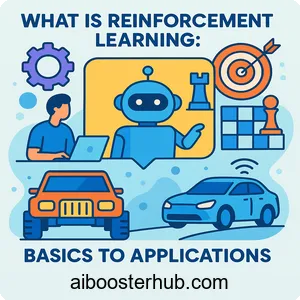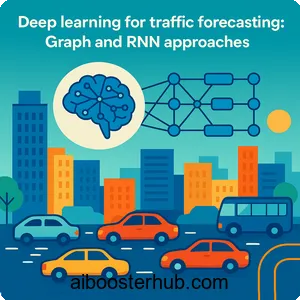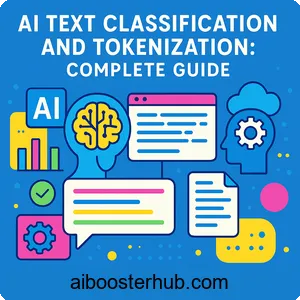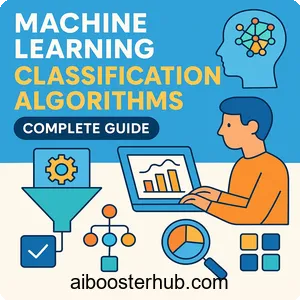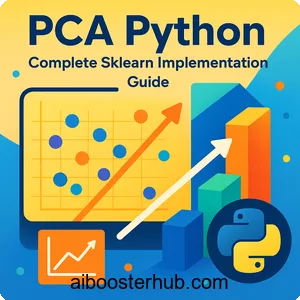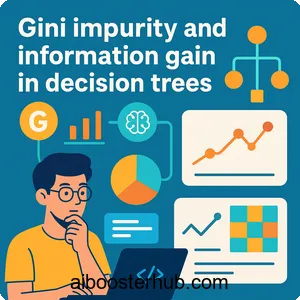Time Series Forecasting: Methods and Modern Approaches
Time series forecasting has become an indispensable tool in modern data science and artificial intelligence applications. From predicting stock prices to forecasting weather patterns, understanding how to analyze and predict temporal data is crucial for businesses and researchers alike. This comprehensive guide explores the fundamentals of time series analysis, traditional forecasting models, and cutting-edge AI-powered approaches that are revolutionizing how we predict future values from historical data.
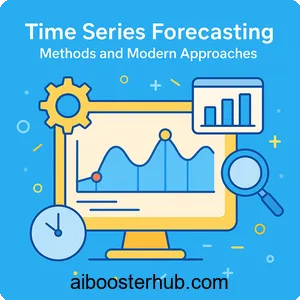
Content
Toggle1. Understanding time series data
What is time series data?
Time series data represents a sequence of observations collected at regular time intervals. Unlike cross-sectional data that captures a snapshot at a single point in time, timeseries data tracks how variables evolve over time. Each observation in a time series is associated with a specific timestamp, making temporal ordering a critical characteristic of this data type.
Common examples of time series include daily stock prices, monthly sales figures, hourly temperature readings, and yearly population counts. The key feature that distinguishes time series from other data types is its inherent temporal dependency—values at one point in time are often correlated with values at previous points.
Components of time series
Understanding the underlying components of time series data is essential for effective forecasting. Most time series can be decomposed into four main components:
Trend represents the long-term direction of the data, showing whether values are generally increasing, decreasing, or remaining stable over time. For instance, a company’s revenue might show an upward trend over several years due to business growth.
Seasonality refers to regular, periodic fluctuations that occur at fixed intervals. Retail sales typically exhibit seasonal patterns with peaks during holiday seasons and troughs during quieter months. These patterns repeat consistently within each year.
Cyclical patterns are longer-term fluctuations that don’t have a fixed period. Economic cycles, for example, can span several years with periods of expansion and contraction that don’t follow a regular schedule.
Irregular or random variations represent unpredictable fluctuations caused by unexpected events or pure randomness. These components cannot be attributed to trend, seasonality, or cycles.
Key properties of time series
When working with time series analysis, understanding stationarity is crucial. A stationary time series has statistical properties—such as mean and variance—that remain constant over time. Many forecasting models assume stationarity, making it necessary to transform non-stationary data before modeling.
Autocorrelation measures the correlation between a time series and its lagged values. This property indicates how much past values influence current observations. The autocorrelation function (ACF) and partial autocorrelation function (PACF) are essential tools for identifying patterns and selecting appropriate models.
2. Traditional time series forecasting models
Moving averages and exponential smoothing
Moving average methods provide simple yet effective approaches to time series forecasting. The simple moving average (SMA) calculates predictions by averaging the most recent observations:
$$ \hat{y}_{t+1} = \frac{1}{n} \sum_{i=0}^{n-1} y_{t-i}$$
where \(n\) is the window size and \(y_t\) represents the observation at time \(t\).
Exponential smoothing improves upon simple averaging by assigning exponentially decreasing weights to older observations. The simple exponential smoothing formula is:
$$ \hat{y}_{t+1} = \alpha y_t + (1-\alpha)\hat{y}_t $$
where \(\alpha\) is the smoothing parameter between 0 and 1.
Here’s a practical Python example using exponential smoothing:
import numpy as np
import pandas as pd
from statsmodels.tsa.holtwinters import ExponentialSmoothing
import matplotlib.pyplot as plt
# Generate sample data
np.random.seed(42)
dates = pd.date_range('2020-01-01', periods=100, freq='D')
trend = np.linspace(100, 150, 100)
seasonal = 10 * np.sin(np.linspace(0, 4*np.pi, 100))
noise = np.random.normal(0, 3, 100)
data = trend + seasonal + noise
# Create time series
ts = pd.Series(data, index=dates)
# Fit exponential smoothing model
model = ExponentialSmoothing(ts, seasonal='add', seasonal_periods=25)
fitted_model = model.fit()
# Forecast
forecast = fitted_model.forecast(steps=20)
# Plot results
plt.figure(figsize=(12, 6))
plt.plot(ts.index, ts, label='Original Data')
plt.plot(forecast.index, forecast, label='Forecast', color='red')
plt.title('Exponential Smoothing Forecast')
plt.legend()
plt.show()
ARIMA and its variants
ARIMA (AutoRegressive Integrated Moving Average) represents one of the most widely used traditional forecasting models. It combines three components:
- AR (AutoRegressive): Uses past values to predict future values
- I (Integrated): Differences the data to achieve stationarity
- MA (Moving Average): Uses past forecast errors in the prediction
The ARIMA model is denoted as ARIMA(p,d,q), where:
- \(p\) is the order of the autoregressive component
- \(d\) is the degree of differencing
- \(q\) is the order of the moving average component
The mathematical representation of ARIMA can be written as:
$$ \left(1 – \sum_{i=1}^{p}\phi_i L^i\right)(1-L)^d y_t = \left(1 + \sum_{i=1}^{q}\theta_i L^i\right)\epsilon_t $$
where \(L\) is the lag operator, \(\phi_i\) are AR coefficients, \(\theta_i\) are MA coefficients, and \(\epsilon_t\) is white noise.
SARIMA (Seasonal ARIMA) extends ARIMA to handle seasonal patterns by adding seasonal terms: SARIMA(p,d,q)(P,D,Q)m, where the uppercase letters represent seasonal components and \(m\) is the seasonal period.
Here’s an implementation example:
from statsmodels.tsa.statespace.sarimax import SARIMAX
from statsmodels.graphics.tsaplots import plot_acf, plot_pacf
# Check stationarity
def check_stationarity(timeseries):
from statsmodels.tsa.stattools import adfuller
result = adfuller(timeseries)
print(f'ADF Statistic: {result[0]}')
print(f'p-value: {result[1]}')
return result[1] < 0.05
# Fit SARIMA model
model = SARIMAX(ts, order=(1, 1, 1), seasonal_order=(1, 1, 1, 25))
fitted_model = model.fit()
# Summary and forecast
print(fitted_model.summary())
forecast = fitted_model.forecast(steps=20)
Prophet for time series forecasting
Prophet, developed by Meta, is designed specifically for business time series with strong seasonal effects and multiple seasons of historical data. Unlike traditional methods, Prophet is robust to missing data and handles outliers effectively.
Prophet decomposes time series into trend, seasonality, and holidays:
$$ y(t) = g(t) + s(t) + h(t) + \epsilon_t $$
where \(g(t)\) is the trend function, \(s(t)\) represents seasonal changes, \(h(t)\) captures holiday effects, and \(\epsilon_t\) is the error term.
from prophet import Prophet
# Prepare data for Prophet
df = pd.DataFrame({'ds': ts.index, 'y': ts.values})
# Initialize and fit model
model = Prophet(
yearly_seasonality=True,
weekly_seasonality=False,
daily_seasonality=False
)
model.fit(df)
# Make predictions
future = model.make_future_dataframe(periods=20)
forecast = model.predict(future)
# Plot forecast
fig = model.plot(forecast)
fig2 = model.plot_components(forecast)
3. Deep learning approaches to time series forecasting
Recurrent neural networks and LSTM
Deep learning has revolutionized time series forecasting by capturing complex nonlinear patterns that traditional models struggle to identify. Recurrent Neural Networks (RNNs) are specifically designed to handle sequential data by maintaining an internal state or “memory.”
LSTM (Long Short-Term Memory) networks address the vanishing gradient problem in standard RNNs, allowing them to learn long-term dependencies. An LSTM cell contains three gates:
- Forget gate: Decides what information to discard from the cell state
- Input gate: Determines what new information to store
- Output gate: Controls what information to output
The mathematical operations in an LSTM cell are:
$$ f_t = \sigma(W_f \cdot [h_{t-1}, x_t] + b_f) $$
The input gate decides what new information to store:
$$ i_t = \sigma(W_i \cdot [h_{t-1}, x_t] + b_i) $$
A candidate cell state is created using:
$$ \tilde{C}_t = \tanh\!\left( W_C \cdot [h_{t-1},\, x_t] + b_C \right) $$
The cell state is then updated by combining the forget and input gates:
$$ C_t = f_t * C_{t-1} + i_t * \tilde{C}_t $$
The output gate controls what information flows out:
$$ o_t = \sigma(W_o \cdot [h_{t-1}, x_t] + b_o) $$
Finally, the hidden state is computed as:
$$ h_t = o_t * \tanh(C_t) $$
Here’s a complete LSTM implementation for time series forecasting:
import tensorflow as tf
from tensorflow.keras.models import Sequential
from tensorflow.keras.layers import LSTM, Dense, Dropout
from sklearn.preprocessing import MinMaxScaler
# Prepare data for LSTM
def create_sequences(data, seq_length):
X, y = [], []
for i in range(len(data) - seq_length):
X.append(data[i:i+seq_length])
y.append(data[i+seq_length])
return np.array(X), np.array(y)
# Scale data
scaler = MinMaxScaler()
scaled_data = scaler.fit_transform(ts.values.reshape(-1, 1))
# Create sequences
seq_length = 10
X, y = create_sequences(scaled_data, seq_length)
# Split data
train_size = int(0.8 * len(X))
X_train, X_test = X[:train_size], X[train_size:]
y_train, y_test = y[:train_size], y[train_size:]
# Build LSTM model
model = Sequential([
LSTM(50, activation='relu', return_sequences=True, input_shape=(seq_length, 1)),
Dropout(0.2),
LSTM(50, activation='relu'),
Dropout(0.2),
Dense(1)
])
model.compile(optimizer='adam', loss='mse')
# Train model
history = model.fit(
X_train, y_train,
epochs=50,
batch_size=32,
validation_split=0.1,
verbose=1
)
# Make predictions
predictions = model.predict(X_test)
predictions = scaler.inverse_transform(predictions)
Transformer models for time series
Originally designed for natural language processing, transformer architectures have shown remarkable performance in time series forecasting. Unlike RNNs that process sequences sequentially, these models use self-attention mechanisms to capture relationships between all time steps simultaneously.
The attention mechanism computes weighted combinations of input sequences:
$$ \text{Attention}(Q, K, V) = \text{softmax}\left(\frac{QK^T}{\sqrt{d_k}}\right)V $$
where \(Q\), \(K\), and \(V\) are query, key, and value matrices, and \(d_k\) is the dimension of the key vectors.
Temporal Fusion Transformers (TFT) and Informer are specialized architectures designed for time series forecasting, combining the power of attention with time series-specific features like temporal embeddings and multi-horizon forecasting.
4. Evaluating forecasting models
Performance metrics
Selecting appropriate metrics is crucial for assessing forecasting model quality. Different metrics emphasize different aspects of forecast accuracy:
Mean Absolute Error (MAE) measures average absolute differences:
$$ \text{MAE} = \frac{1}{n}\sum_{i=1}^{n}|y_i – \hat{y}_i| $$
Mean Squared Error (MSE) penalizes larger errors more heavily:
$$ \text{MSE} = \frac{1}{n}\sum_{i=1}^{n}(y_i – \hat{y}_i)^2 $$
Root Mean Squared Error (RMSE) is in the same units as the target:
$$ \text{RMSE} = \sqrt{\frac{1}{n}\sum_{i=1}^{n}(y_i – \hat{y}_i)^2} $$
Mean Absolute Percentage Error (MAPE) expresses error as a percentage:
$$ \text{MAPE} = \frac{100}{n}\sum_{i=1}^{n}\left|\frac{y_i – \hat{y}_i}{y_i}\right| $$
from sklearn.metrics import mean_absolute_error, mean_squared_error
import numpy as np
def evaluate_forecast(y_true, y_pred):
mae = mean_absolute_error(y_true, y_pred)
mse = mean_squared_error(y_true, y_pred)
rmse = np.sqrt(mse)
mape = np.mean(np.abs((y_true - y_pred) / y_true)) * 100
print(f'MAE: {mae:.2f}')
print(f'RMSE: {rmse:.2f}')
print(f'MAPE: {mape:.2f}%')
return {'mae': mae, 'rmse': rmse, 'mape': mape}
# Example usage
metrics = evaluate_forecast(y_test, predictions.flatten())
Cross-validation for time series
Standard cross-validation techniques don’t work well with time series because they violate temporal ordering. Time series cross-validation uses rolling or expanding windows:
from sklearn.model_selection import TimeSeriesSplit
# Time series cross-validation
tscv = TimeSeriesSplit(n_splits=5)
for train_index, test_index in tscv.split(X):
X_train, X_test = X[train_index], X[test_index]
y_train, y_test = y[train_index], y[test_index]
# Train and evaluate model
model.fit(X_train, y_train)
predictions = model.predict(X_test)
score = mean_squared_error(y_test, predictions)
print(f'Fold MSE: {score:.2f}')
5. Practical considerations and best practices
Data preprocessing and feature engineering
Successful time series forecasting begins with proper data preprocessing. Handling missing values is critical—forward fill, backward fill, or interpolation methods can be used depending on the context:
# Handle missing values
ts_filled = ts.fillna(method='ffill') # Forward fill
ts_interpolated = ts.interpolate(method='linear')
# Remove outliers using z-score
from scipy import stats
z_scores = np.abs(stats.zscore(ts))
ts_clean = ts[z_scores < 3]
Feature engineering can significantly improve model performance. Creating lagged features, rolling statistics, and time-based features provides models with additional context:
def create_features(df):
df['lag_1'] = df['value'].shift(1)
df['lag_7'] = df['value'].shift(7)
df['rolling_mean_7'] = df['value'].rolling(window=7).mean()
df['rolling_std_7'] = df['value'].rolling(window=7).std()
df['day_of_week'] = df.index.dayofweek
df['month'] = df.index.month
df['quarter'] = df.index.quarter
return df.dropna()
Handling multiple time series
Many real-world applications involve forecasting multiple related time series simultaneously. Hierarchical forecasting ensures predictions are coherent across different aggregation levels. For example, forecasting retail sales might require predictions at store, regional, and national levels that sum consistently.
Vector Autoregression (VAR) models can capture relationships between multiple time series:
from statsmodels.tsa.vector_ar.var_model import VAR
# Prepare multivariate time series
data = pd.DataFrame({
'series1': series1,
'series2': series2,
'series3': series3
})
# Fit VAR model
model = VAR(data)
results = model.fit(maxlags=5)
# Forecast
forecast = results.forecast(data.values[-5:], steps=10)
Model selection and ensemble methods
No single model performs best for all time series. Comparing multiple approaches and using ensemble methods often yields superior results:
# Simple ensemble averaging
arima_forecast = arima_model.forecast(steps=20)
lstm_forecast = lstm_model.predict(X_future)
prophet_forecast = prophet_model.predict(future)['yhat'].values
ensemble_forecast = (arima_forecast + lstm_forecast + prophet_forecast) / 3
Weighted ensembles can assign different importance to each model based on validation performance:
# Weighted ensemble based on inverse error
weights = np.array([1/arima_error, 1/lstm_error, 1/prophet_error])
weights = weights / weights.sum()
ensemble_forecast = (weights[0] * arima_forecast +
weights[1] * lstm_forecast +
weights[2] * prophet_forecast)
6. Advanced topics and future directions
Probabilistic forecasting
Point forecasts provide single predicted values, but probabilistic forecasting quantifies uncertainty by producing probability distributions or prediction intervals. This approach is crucial for risk management and decision-making under uncertainty.
Quantile regression enables prediction of specific percentiles:
from sklearn.ensemble import GradientBoostingRegressor
# Train models for different quantiles
quantiles = [0.1, 0.5, 0.9]
models = {}
for q in quantiles:
model = GradientBoostingRegressor(loss='quantile', alpha=q)
model.fit(X_train, y_train)
models[q] = model
# Generate prediction intervals
lower_bound = models[0.1].predict(X_test)
median = models[0.5].predict(X_test)
upper_bound = models[0.9].predict(X_test)
Transfer learning and pre-trained models
Transfer learning applies knowledge learned from one time series to improve forecasting on related series with limited data. Pre-trained models on large time series datasets can be fine-tuned for specific applications, dramatically reducing training time and data requirements.
Causal inference in time series
Understanding causal relationships, not just correlations, is essential for robust forecasting. Granger causality tests whether past values of one series help predict another series:
from statsmodels.tsa.stattools import grangercausalitytests
# Test Granger causality
data = pd.DataFrame({'series1': series1, 'series2': series2})
results = grangercausalitytests(data, maxlag=5)
Real-time and streaming forecasting
Many modern applications require real-time predictions as new data arrives. Online learning algorithms update models incrementally without retraining from scratch, enabling efficient forecasting in streaming environments.
7. Conclusion
Time series forecasting has evolved from simple statistical methods to sophisticated AI-powered approaches that can capture complex temporal patterns. Traditional models like ARIMA and Prophet remain valuable for their interpretability and effectiveness on well-behaved data, while deep learning methods like LSTM and transformers excel at modeling nonlinear relationships and long-range dependencies. The key to successful forecasting lies in understanding your data’s characteristics, selecting appropriate models, and rigorously evaluating performance.
As the field continues advancing, we’re seeing exciting developments in probabilistic forecasting, transfer learning, and automated model selection. Whether you’re predicting customer demand, energy consumption, or financial markets, mastering both classical and modern forecasting techniques provides a powerful toolkit for extracting insights from temporal data. The combination of solid theoretical foundations with practical implementation skills enables you to tackle real-world forecasting challenges with confidence.


